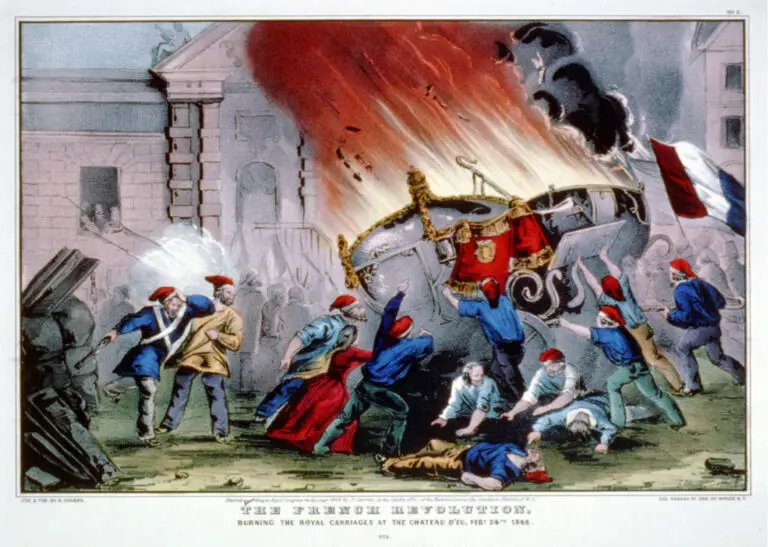French Revolution

Table of Contents
French Revolution Overview
From 1789 to 1799, the French Revolution was a tumultuous period of radical political and social change in France. Triggered by economic hardships, social inequality, and discontent with the absolute monarchy, the revolution aimed to establish a more egalitarian and democratic system.
Key events included the convening of the Estates-General, storming the Bastille, adopting the Declaration of the Rights of Man and of the Citizen, and the Reign of Terror marked by radical phases and the execution of King Louis XVI.
The revolution led to the rise of the French First Republic and the eventual ascent of Napoleon Bonaparte, who became Emperor in 1804. While the revolution brought about significant political and social reforms, it also led to internal conflicts, external wars, and the spread of revolutionary ideals across Europe.
French Revolution History
The French Revolution, a period of radical social and political upheaval, lasted from 1789 to 1799, leading to the end of the Bourbon monarchy and the rise of the First French Republic.
Economic hardships, high taxes, and social inequality contributed to widespread discontent among the French population, sparking the revolution in 1789.
The Estates-General was convened in May 1789 to address financial issues. Still, tensions escalated, leading to the formation of the National Assembly, which eventually adopted the Declaration of the Rights of Man and the Citizen in August 1789.
The storming of the Bastille on July 14, 1789, is a symbolic event marking the beginning of the revolution, representing the people’s defiance against royal authority.
The radical phase of the revolution, marked by the Reign of Terror, began in 1793 and was led by radical Jacobins, including Maximilien Robespierre.
King Louis XVI and Queen Marie Antoinette were executed by guillotine in 1793, signaling the end of the Bourbon monarchy.
The Committee of Public Safety, a revolutionary government body led by Robespierre, wielded immense power during the Reign of Terror and implemented radical measures to suppress perceived enemies of the revolution.
The execution of Robespierre in 1794 marked the end of the Reign of Terror, leading to the establishment of the more moderate Thermidorian government.
The Napoleonic era followed the French Revolution, with Napoleon Bonaparte coming to power as First Consul in 1799 and later declaring himself Emperor in 1804.
The Napoleonic Code, introduced by Napoleon in 1804, consolidated and modernized French law, emphasizing equality before the law and the protection of property rights.
Related Links
Enlightenment
Franco-Prussian War
Revolutions of 1848
Suez Canal